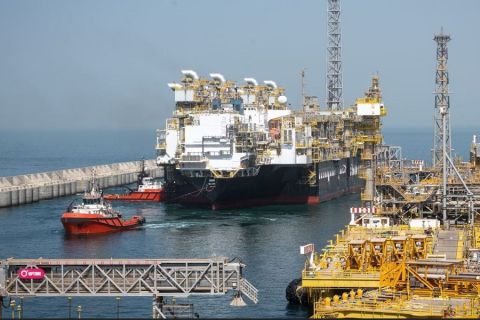U.S. natural gas futures jumped about 8% to a two-month high on Nov. 23, before the Thanksgiving Day holiday, on forecasts for much colder weather and higher heating demand over the next two weeks.
Futures pared gains of over 11% earlier in the day after a federal report showed a slightly smaller-than-expected storage withdrawal last week. The withdrawal was still bigger than usual because colder-than-normal weather last week boosted heating demand.
With cold weather this week lingering across much of the country, analysts said homes and businesses kept heaters cranked up and next week’s storage withdrawal will likely also be bigger than usual too.
Rapid price moves in recent weeks—futures have gained or lost more than 5% during half of the trading days so far in November—boosted the contract’s 30-day implied volatility index to a record high. The market uses implied volatility to estimate likely price changes in the future.
Analysts said the market could experience even more volatility on Nov. 25 when options for the December contract expire on the Nymex.
“Looking ahead, as market players thin out even more for the remainder of the Thanksgiving holiday week, bigger price volatility is expected as ‘options expiration’ caps the end of this week,” analysts at energy consulting firm Gelber & Associates told customers in a note.
The U.S. Energy Information Administration (EIA) said utilities pulled 80 Bcf of gas from storage during the week ended Nov. 18. EIA released the report on a day ahead of usual due to the U.S. Thanksgiving Day holiday on Nov. 24.
That was smaller than the 87-Bcf withdrawal analysts forecast in a Reuters poll and compares with a decrease of 14 Bcf in the same week last year and a five-year (2017-2021) average decline of 48 Bcf.
Front-month gas futures for December delivery on the Nymex rose 55.7 cents, or 8.2%, to $7.336/MMBtu at 12:04 p.m. EST (1704 GMT), putting the contract on track for its highest close since Sept. 21.
That also puts the front-month on track to close in technically overbought territory with a relative strength index (RSI) over 70 for the first time since August.
Also supporting futures were worries about a possible rail strike that could disrupt coal shipments to utilities this winter, forcing power generators to burn more gas to produce electricity.
In addition, the market still had questions about whether Freeport LNG will be able to restart its LNG export plant in Texas in mid-December as planned.
Freeport LNG has not yet submitted a full request to the U.S. Department of Transportation’s Pipeline and Hazardous Materials Safety Administration (PHMSA) to restart the export plant, according to sources familiar with the company’s filings.
That matters because once the 2.1-Bcf/d plant restarts it will consume U.S. gas to turn it into LNG for export, boosting demand for gas at the same time that cold winter weather will boost heating demand.
After Freeport LNG delayed the plant’s restart from November to December, at least one LNG vessel—LNG Rosenrot—turned away from the facility last week. Another vessel, Prism Agility, which is near the Bahamas and says it will arrive at Freeport in a few days, also seems to have turned away from the plant on Nov. 23, according to ship tracking data from Refinitiv.
There are, however, a few ships still waiting to pick up a cargo near Freeport—some have been there for weeks—including Prism Brilliance, Prism Diversity and Prism Courage.
Recommended Reading
Coast Guard Confirms Amplify’s Platform Elly Unrelated to California Oil Sheen
2024-03-11 - Amplify Energy remains confident that the sheen off Huntington Beach, California is not related to its operations.
BP: Gimi FLNG Vessel Arrival Marks GTA Project Milestone
2024-02-15 - The BP-operated Greater Tortue Ahmeyim project on the Mauritania and Senegal maritime border is expected to produce 2.3 million tonnes per annum during it’s initial phase.
Proven Volumes at Aramco’s Jafurah Field Jump on New Booking Approach
2024-02-27 - Aramco’s addition of 15 Tcf of gas and 2 Bbbl of condensate brings Jafurah’s proven reserves up to 229 Tcf of gas and 75 Bbbl of condensate.
Second Light Oil Discovery in Mopane-1X Well
2024-01-26 - Galp Energia's Avo-2 target in the Mopane-1X well offshore Namibia delivers second significant column of light oil.
Seadrill Awarded $97.5 Million in Drillship Contracts
2024-01-30 - Seadrill will also resume management services for its West Auriga drillship earlier than anticipated.





